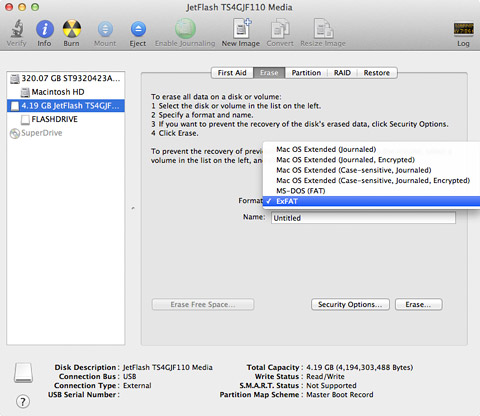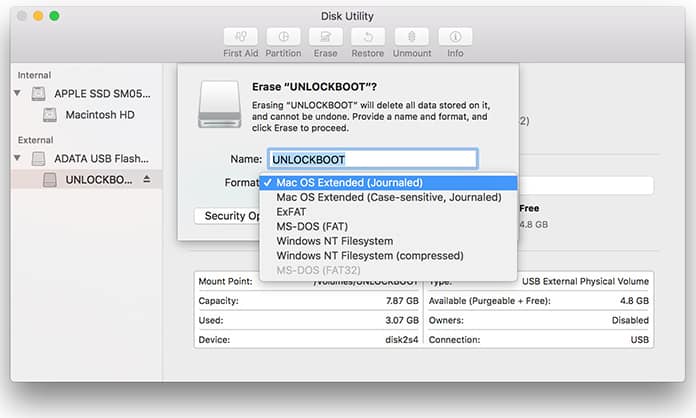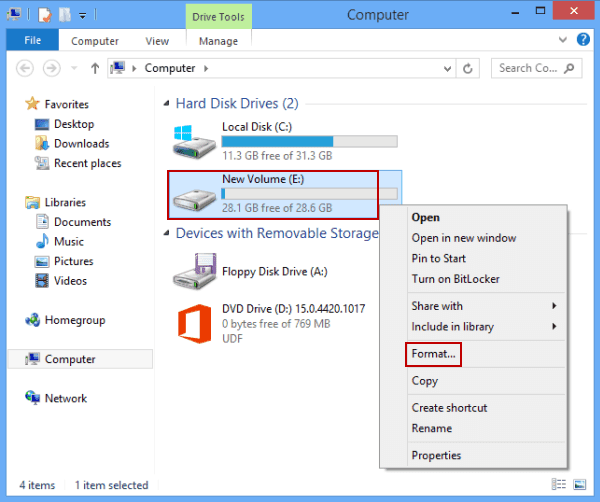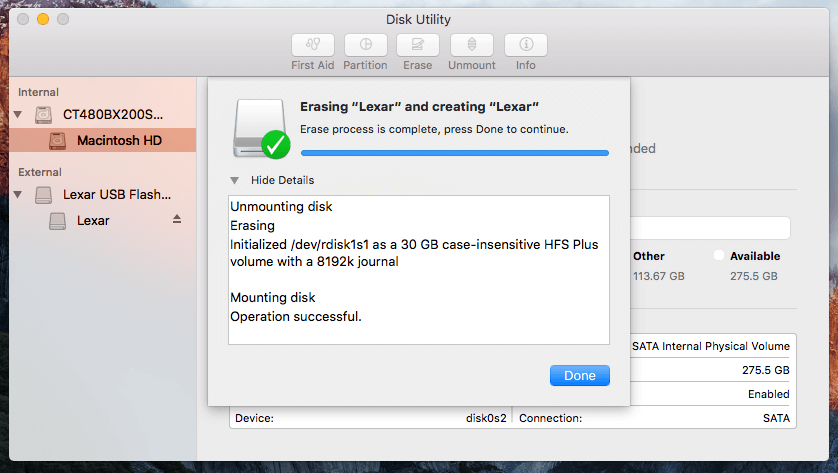

- #Usb format mac and windows how to#
- #Usb format mac and windows full#
- #Usb format mac and windows windows#
How to Perform a USB Drive Format on Mac? Note: In this method, you should note that after entering the format command, it goes to format the USB flash drive to exFAT directly, and if you want a FAT32 drive, just replace exFAT to FAT32, that’s all.
Format-Volume -DriveLetter F -FileSystem exFAT (Replace F to the exact drive letter of your USB flash drive). Step 2: Enter the following command to view the USB flash drive you want to format: Step 1: Right-click on the Start menu at the lower-left corner and choose Windows PowerShell(Admin). PowerShell is a task and configuration management platform which was first appeared in 2006 it’s powerful than Command Prompt that can be used to automate many different system administration tasks, and of course, for formatting a USB flash drive: Method 4: Format a USB Flash Drive Using PowerShell (Windows 10 Only) Step 3: Select exFAT from the File System drop-down menu. Step 2: Right-click on the desired USB flash drive and select Format. Step 1: Press Win + Q, type in Disk Management and open it. This is a method similar to the one performed by using File Explorer, and here are the steps you can follow: Method 3: Format a USB Drive Using Disk Management Note: Replace exFAT if you choose another file system, for example, enter the command format fs=fat32 to format the USB flash drive into FAT32 format.
format fs=exFAT quick (Don’t enter quick if you want a full format). select volume NUMBER (Replace NUMBER to the exact number of your USB flash drive). Step 2: Enter the below-written commands in the same order and same diskpart window: Step 1: Enter Command Prompt in the search bar and then right-click it, choose Run as administrator. However, the user should select the correct volume before carrying out a quick or full format on your USB flash drive: Using diskpart to format a USB flash drive is another useful method, and even it works for the computer user who has no exFAT options in File Explorer or Disk Management. Method 2: Format a USB Flash Drive Using Diskpart Note: Uncheck the Quick Format means full format it goes with a thorough scanning and wiping your data on the USB flash drive, you will have no chance to get back your data after using this option. Step 3: Expand the File system drop-down menu and select the exFAT option. Step 2: Right-click on the drive and choose the Format option. Step 1: Connect your USB flash drive and open press Win key + E to open File Explorer. Refer to the following steps to learn how. This is the easiest way with which many users are familiar. Read More : Solutions To Fix Corrupted Files From USB Flash Drive Method 1: Format a USB Flash Drive Using File Explorer Generally, On Windows 10, 8, 7, there are some common ways you can format a USB flash drive. How to Format a USB Drive on Windows 7/8/10?Īfter deciding which file system you are going to apply, let’s explore the formatting methods. We strongly recommend that you use exFAT, which is considered the best choice for both Windows and Mac computers, whereas the exFAT file system works better than FAT32 and can handle the file size up to 16GB. 
It serves no matter the Windows or Mac users who want to work with files larger than 4GB. exFAT: It provides an unlimited file and partition size.

The disadvantage is that the Mac computer can only read the data from the NTFS drive. Besides, it supports on-the-fly file encryption.

NTFS: It can create partitions larger than 32GB and read/write files larger than 4GB. But it cannot handle single files larger than 4GB and has a limited partition size (up to 32GB). FAT32: It’s compatible with all major operating systems and uses less memory usage. We can’t talk about formatting without talking about file system as it differs when we are using the different computers the common file systems are FAT32, exFAT, and NTFS for Windows, APFS, HFS+, and exFAT for macOS, here we will only talk about the most common file systems when formatting a USB flash drive: Which File System Should I Choose for a USB Flash Drive? Meanwhile, it also creates a filing system that can help organize your data on Windows or Mac. It wipes all the data stored on your flash drive and allows full use of the storage capacity. Recover Files From a Formatted Drive Using Bitwar Data Recoveryįormatting is the fastest way to prepare the USB flash drive for initial use. How to Perform a USB Drive Format on Mac?. Method 4: Format a USB Flash Drive Using PowerShell (Windows 10 Only). Method 3: Format a USB Drive Using Disk Management. Method 2: Format a USB Flash Drive Using Diskpart. Method 1: Format a USB Flash Drive Using File Explorer. How to Format a USB Drive on Windows 7/8/10?. Which File System Should I Choose for a USB Flash Drive?.








 0 kommentar(er)
0 kommentar(er)
